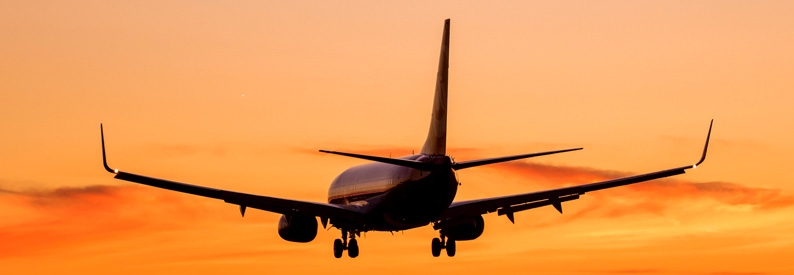AirX Charter (AX, Malta International) is evaluating opportunities to grow its fleet as the preowned aircraft market normalises, chief executive Friedrich Baldinger told ch-aviation in an interview at EBACE in Geneva. The Maltese operator targets mainly existing fleet types, although it would like to add long-range heavy business jets.
"I think now the market has started to stabilise a bit again. In the past two years, there was nothing for us to get there because asset prices went up and bank financing went wild, so it was not the right time for us to expand our fleet. But we have seen it coming down now, and I think this year there will be some good opportunities for us to grow the fleet," he said.
AirX wants to target growth using existing fleet types, mainly with heavy business jets. However, it is also looking at expanding into the long-range business jet segment, where it is not currently present. Talks have taken place, but no deals have yet been signed.
"The heavy jets we operate are good products. But it would be helpful for us to get something with a bit more range from the heavy jet segment, allowing us to operate routes like London-Dubai more easily," Baldinger outlined.
Heavy jet focus
The operator's fleet currently includes seven Challenger 850s, three Legacy 600s, and five Lineage 1000s. Despite the Lineage 1000 being out of production, Baldinger denied any plans to retire the aircraft. Given the type's similarity with the E190, AirX Charter does not expect any problems in procuring spares in the coming years.
AirX Charter has no plans to order new aircraft from any manufacturer and will instead keep an eye on the preowned market. That said, the carrier is continuously looking for new growth opportunities and is also evaluating Airbus Corporate Jets types, including the ACJ220-100. "I think there could be a business [for the type], but I cannot disregard the price of the aircraft because this is the main cost driver," Baldinger emphasised.
Bizliner operations
AirX Charter used to operate a sizeable bizliner fleet, which peaked at seven aircraft in 2021 but has since shrunk to two: one A340-300 configured for up to 100 passengers and one B737-700(BBJ) seating up to 19. The two aircraft serve different market niches with the most frequent customers for the high-capacity A340 being sports teams, including from the US, corporations staging large events, and premium tour operators arranging luxury tours.
AirX Charter, which owns all of its aircraft, has no plans to retire the A340 even though, as Baldinger conceded, purely from a fuel-burn perspective, renewing the aircraft with a twin-engine type could be beneficial. The operator has, however, benefitted from low ownership costs. Taking into account the increased overheads of adding a newer type, "the overall footprint" of renewal would likely be negative. "It's not a scheduled operation; we don't fly that many hours. So we fly when it makes sense. And if the price is not good enough, then we better sit down and wait for the next job."
The operator added two A340-600s in 2021 which, Baldinger said, was only a short-term step to capitalise on the booming makeshift freighter market during the pandemic. The two aircraft, which were only managed by AirX, were retired after just a few months as the market for such flights disappeared due to scheduled operations reverting back to normal post-pandemic.
AirX Charter also operated three B737-500s configured for up to 56 passengers until early 2020, being one of the first carriers to enter this market segment. However, competition eventually drove prices down below economic sense through "oversaturation". This, combined with limited and, at some stage, completely impossible group travel during the pandemic, led AirX to exit that market.
"It was a good addition to what we do. But there's a lot of effort needed to get this right and you need to invest a lot of money into that operation," Baldinger said.
Given the limited demand for executive bizliners for large groups, AirX Charter has no plans to expand in this sector.
"We looked at adding more widebodies. The key problem is everyone usually wants to fly at the same time, during some big events - that's when there is demand. But this market does not need too many planes [on a year-round basis], in my opinion," Baldinger said.
Meanwhile, the B737-700(BBJ) is a "head of state aircraft" with luxury amenities on board, serving the top-end of the business aviation charter market.
Market environment
Demand for charters is currently very strong, and AirX Charter aims to improve its planning efficiency. "We're trying to be a bit smarter in how we operate the flights, a bit more efficient, reducing ferry times," Baldinger explained. This can result in the operator reducing the number of annual hours flown in 2024 but concurrently increasing its revenue. Even after this strategically driven reduction in the number of operating hours, AirX Charter's utilisation is still much higher than market average, reaching up to 1,200-1,300 hours per aircraft per year.
Its sizeable in-house maintenance capabilities, with around 70 employees, have partially insulated AirX Charter from pervasive supply chain issues.
"One of the key issues for the market was that all the third-party MRO providers were completely overloaded if you needed them," Baldinger said, adding that the operator's maintenance facility serves mainly its own fleet, although it also has a limited number of external customers.
AirX Charter discontinued its German AOC in 2020 as part of its Covid-driven restructuring and is happy with a single Maltese certificate with no current plans to add any more in the near term.







